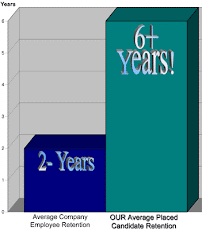We are all familiar with the Software as a service model (SaaS). Many of the successful ATS vendors in the recruiting market have grown their businesses with the SaaS model. Salesforce.com is now taking SaaS to a new level. They call it Platform as a service or PaaS. Salesforce.com has a new development environment that allows developers and companies to base applications on the same infrastructure that salesforce.com is built from. This is significant event, here is why.
With the Force.com framework, you can build applications that look nothing like salesforce.com or you can create “mashups” that combine salesforce.com, Gmail, Yahoo Maps, etc. I have seen many email systems from ATS vendors, some are very very good. But none of them come remotely close to Google’s Gmail.
Ok, what am I getting at? Imagine this: An army of developers writing bolt on applications. Job posting mashups, resume parsing mashups, search engine aggregator mashups, objection-response mashups, etc, etc. Basically, an entrepreneur can now create a complete ATS system and not have to worry about core software, hardware and datacenters. Most of the basics are covered by salesforce.com and Google applications. Yes, the workflow and business logic will have to developed, but taking a job order is not that complicated. I should mention that there is even an open source ATS system right now, CatsOne, see it here: CATS.
The playing field has been leveled. APEX, the salesforce programming language is similar to JAVA. Salesforce has over a million users.
Why was I at tour de force? Broadlook is salesforce.com’s latest partner. We just launched our Contact Capture for salesforce.com on the salesforce appExchange. We use our Broadlook Universal Exporter (BLUE) to send data to Salesforce.com. What that means is that ALL Broadlook applications, now work with salesforce.com. So if any company or entrepreneur want to create their own ATS system, it will be 100% compatible with all Broadlook applications day 1.
This is a trend we will continue to see over the next decade. Barriers of entry being continually reduced. Exciting stuff.
If is also amazing that this idea of mashups came up recently on the recruiting animal show. Someone said that the company that creates it will make a zillion. Well the platform is here, salesforce is the first mover in the space, but I predict that we will see additional offerings from other vendors, google, microsoft, etc. The end result is that everyone wins.
While salesforce is the first mover, they will not be the only mover. The real message here is
1. PaaS will disrupt Saas, due to ease of entry
2. The barrier of entry for someone to create a SaaS model has been significantly reduced and it will continue to become easier.
3. Look for PaaS from multiple vendors. (i.e. Recruitingblogs.com is based on Ning.com) another example of PaaS. This was not available 2 years ago.
iDonato,
Broadlook CEO Donato Diorio
donato@donatodiorio.com”
http://www.idonato.com/
I just returned from an beta event showing another PaaS product by Hideshi Hamaguchi, former Panasonic veteran who is creating a PaaS product with a “back page” to a document. The Beta will be release in February. Check them out. Lunarr. www.lunarr.com













